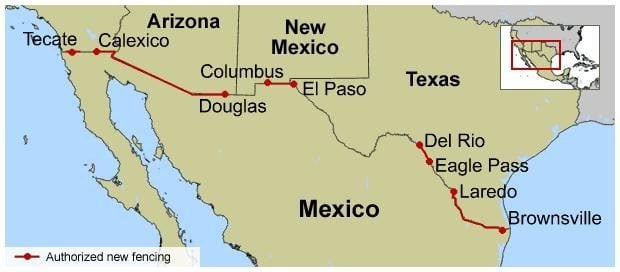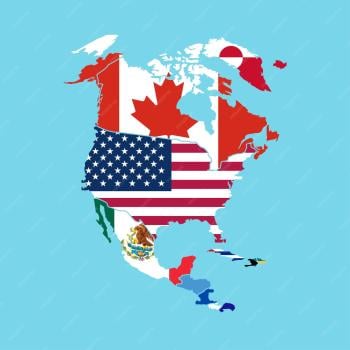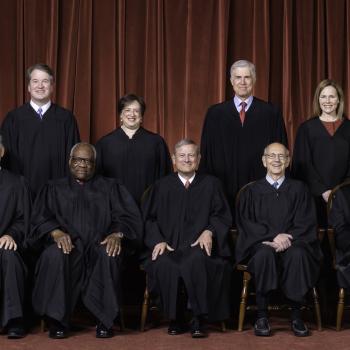[For an explanation of these 18 posts, see Part 1 published on 3/27/2019.]
But there remained more to do to stop Islamic terrorism and illegal immigration in the U.S. President George W. Bush authorized 6,000 additional agents to shore up the understaffed and overworked U.S. federal Border Patrol along the U.S.-Mexico border. Yet most Americans thought that was not enough. So, in early 2006, the four U.S. states along this border sent their National Guard troops to assist the federal Border Patrol.
One problem with the U.S. Border Patrol is bribery. Drug smugglers constantly try to bribe border patrol personnel. Between 2004 and 2006, 200 U.S. public employees were charged with helping to transport illegal narcotics and illegal immigrants across the U.S.-Mexico border into the U.S. Those charged included border patrol agents, local police, county sheriffs, motor vehicle clerks, U.S. military, and many others. The large majority of them pleaded guilty or were convicted. The Los Angeles Times reported that this figure was double in previous years. Thousands more cases were under investigation. Many authorities said those charged were only the tip of the iceberg. Even more alarming was that these experts warned that border corruption would increase as the federal government attempted to improve its border security. James Burrus, assistant director of the criminal investigation division of the FBI asserted concerning border patrol staff, “If you increase the number of people on the border, you are going to get more corruption.”[1]
That is all the more reason why so many U.S. citizens thought their country needed to build some type of security wall or fence along its border with Mexico. For a few years, California was building several miles of fences along its border with Mexico, starting at the Pacific Ocean and extending eastward.
In October, 2006, Congress passed The Secure Fence Act, and President Bush signed it into law. It provided for the construction of a double-layered fence along 680 miles of the total 1,950-mile U.S.-Mexico border. It was to be placed intermittently at those areas most vulnerable to illegal crossings. The plan included what was called a “virtual fence” for the remaining remote areas between the actual fence barriers. This virtual fence was to consist of a network of intermittent towers with sensors and cameras. They would beam signals via satellite to a command center and trucks that U.S. border agents would use to arrest illegals. But Congress initially budgeted only $1.2 billion for the fence’s construction, which was estimated to cost $6-9 billion.
The previous month, the Senate voted to spend $1.8 billion on 370 miles of triple-layer fencing as well as 470 more miles of environmentally-friendly vehicle barriers along the border that prevent vehicular environmental damage. Environmentalists argue that walls and fences will also stop the natural migration of animals and thereby reduce their populations.
Mexico’s President Vicente Fox bitterly opposed a fence barrier on its border with the U.S. He favored a U.S. worker-quest program. But that would only sustain Mexico’s second highest source of income—Mexican illegals working in the U.S. and sending part of their wages back to their relatives in Mexico to live on. In fact, this illegal immigration of mostly Mexicans into the U.S. has strained relations between the two countries.
The U.S. finds itself between a rock and hard place on this one. Although Canada is by far the U.S.’s largest trading partner, far exceeding trade with Mexico, this southern neighbor remains an important trading partner to the U.S. for mostly one reason—oil. As the U.S. dependence on foreign oil has increased—now at over 50% of all U.S. oil consumption—the country has increased its import of oil from Mexico. And Mexican oil has become even more strategic to the U.S. because Iran and Guatemala, former U.S. oil trading partners who possess some of the world’s largest oil reserves, continue to be enemies of the U.S.
In early 2019, the Southwest Border Sheriffs Coalition, which represents all 31 U.S. counties within 25 miles of the U.S.-Mexico border issued a three-page letter about a physical barrier on the border. It said, like Genghis Khan did centuries ago, “The idea that a wall is the only solution because it is permanent is misguided. A wall that is not monitored, enforced or maintained is only an impediment not real security.”[2]
[1] This paragraph is gleaned from The Arizona Republic, October 25, 2006.
[2] The Arizona Republic, January 19, 2019.













